Some for-profit schools even peddle in-house private loans that have run afoul of the government for the predatory terms

In , network technicians opened a special connection between computers at the federal departments of Education and Treasury. On nights and weekends throughout the month, that connection delivered to Treasury some 46 million pieces of information about student borrowers in the United States, including their financial situations when they started and left college, their incomes after school and whether or not they kept up with their loans.
After taking pains to protect the privacy of individual students, Treasury’s deputy assistant secretary for tax analysis, Adam Looney, and a Stanford University economics graduate student named Constantine Yannelis began sifting the loan data for patterns. They wanted more information on what many political leaders have dubbed an economic and educational crisis in the United States – a spike in the number of students who have defaulted on their loans in recent years.
It was just constant amazement,” Looney said in an interview. “You see things for the first time. It is very hard to see what’s going on in the loan market from published statistics and what you can find online.”
What they saw was less of a national crisis than a very localized one: The surge in defaults was largely concentrated among relatively older, lower-income students who attended for-profit colleges.
That’s a group of Americans who, on the whole, were desperately seeking new skills in hopes of finding better-paying jobs through the 2000s – and especially the Great Recession. The data suggest many of those borrowers have found added struggle instead.
Default rates among so-called “traditional students” at four-year schools and graduate schools have stayed relatively low since 2000, Looney and Yannelis report today in a study released by the prestigious Brookings Papers on Economic Activity.
But defaults have soared among non-traditional borrowers, particularly at for-profit schools (and to a lesser extent, at two-year public or non-profit schools), a group whose ranks swelled in the 2000s. Those students, the economists write, borrowed heavily to pay relatively high tuition costs at schools that don’t have a good track record of graduating their students, and which don’t put their students on paths to good jobs nearly as well as other colleges do.
Of the students required to start repayment on loans in 2011, 2 percent of graduate students and 8 percent of traditional undergraduates had defaulted within two years. Among non-traditional borrowers, about 21 percent had defaulted. Of all the borrowers who were in default in 2013, 70 percent were non-traditional students.
The change in the types of schools students attended – particularly the shift toward for-profits – explains by itself between one-third and one-half of the increase in loan defaults over the decade, Yannelis and Looney calculated.
Part of the story is certainly that there was an increase in disadvantaged students, particularly during the recession, and that increased the instance of default and delinquency,” Looney said. “But that’s not the whole story. The institutions themselves matter.
While the rising cost of college has led to increased borrowing across the board, the financial dynamics at for-profit schools places added pressure on their students. Few for-profit colleges offer scholarships and grants to cover tuition and fees, which according to the College Board costs an average $15,230 a year for full-time students.
As the authors note, students who attend for-profit colleges are typically from low-income households without the financial means to pay for school. About 73 percent of full-time students at for-profit colleges https://getbadcreditloan.com/payday-loans-wv/whelling/ use Pell Grants, a federal program that provides money to the country’s neediest college students, according to the Education Department. That compares to 37 percent of students at private universities and 45 percent of students at public universities.
At most, federal grants cover a third of the cost of college, forcing students who can’t pay out of pocket to borrow money to cover the balance. Because the federal government will only allow undergraduates to borrow up to $31,000 in total ($57,500 for older independent borrowers) students at for-profit schools often turn to banks and other financial firms for loans.
Students at for-profit colleges only account for 11 percent of the total higher-education population, but 44 percent of all federal student loan defaults, according to the Education Department
Corinthian Colleges, the now defunct for-profit chain, is being sued by the Consumer Financial Protection Bureau for steering students into private loans, known as Genesis loans, with interest rates as high as 15 percent. The bureau said Corinthian set its tuition and fees for bachelor’s degrees at $60,000 to $75,000 to force students to borrow from the program and then received a slice of the lenders fees.



